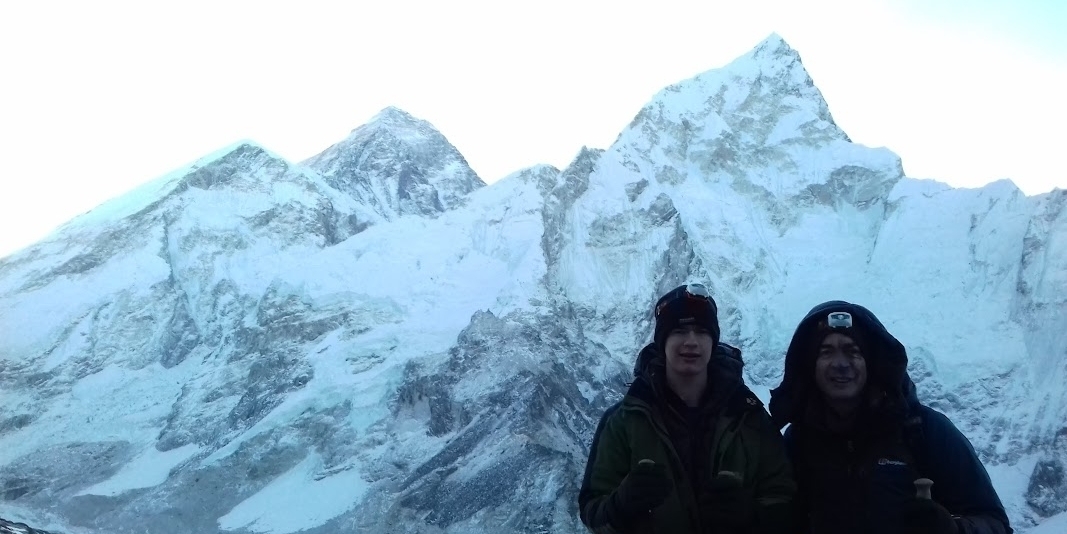


Mount Lhotse is situated close to Tibet, which is known as Khumbu region and it is in Nepal Himalayas on the boundary between Nepal and Tibet.
It is famous for its wonderful climbing encounters and its closeness to Mount Everest 8,848m meters.
Mount Lhotse is a self-governing Region of China, which is the fourth-highest mountain in the world. This mountain is in the Sagarmatha National Park.
Here is a summary history of Mount Lhotse: Discovery and Naming: Mount Lhotse’s existence was recognized by the locals in the region for centuries but remained quite unknown to the Western world until the mid-20th century.
In 1952, the mountain was observed and named during the Swiss Mount Everest/Lhotse expedition led by Edouard Wyss-Dunant.
“Lhotse” is a Tibetan word that means “South Peak” about its location just south of Mount Everest.
Early Expeditions: The first attempts to climb Mount Lhotse took place in the 1960s and 1955, a Swiss expedition led by Ernst Reiss and Fritz Luchsinger reached an altitude of roughly 8,505 meters (27,903 feet) on the mountain’s western face, setting a new altitude record at the time.
Following excursions attempted different routes, including the south face and the west face, but faced abundant challenges due to the mountain’s sudden and technically difficult territory.
Successful Ascents: The first successful ascent of Mount Lhotse occurred on May 18, 1956, by a Swiss team led by Fritiz Luchsinger and Ernst Reiss.
They reached the summit via the western face, marking the first ascent of an 8,000-meter peak by a team that had formerly reached high altitude without supplemental oxygen.
Since then, several successful ascents have been made via various routes, including the south face, the west face, and the normal route from the Everest South Col.
Lhotse Shar: Lhotse Shar is next to Mount Lhotse is a supplementary peak known as Lhotse Shar or Lhotse Middle. Lhotse Shar stands at a height of approximately 8,383 meters (27,503 feet). It was first climbed on May 12, 1970, by a Soviet expedition led by Eugency Beletskiy. Lhotse Shar assists its own set of experiments and has become a gorgeous objective for mountaineers looking to stun this distinct peak.
Significance and Expeditions: Mount Lhotse holds significant mountaineering importance due to its closeness to Mount Everest and its impressive prominence.
Many climbers attempt to summit both Lhotse and Everest as part of a single expedition. So this means the expedition of Mount Lhotse also begins from Everest Base Camp.
Lhotse’s interesting landscape, sharp faces, and methodical sectors continue to attract experienced mountaineers seeking new uphill adventures.
Conservation and Preservation: Mount Lhotse falls within the Sagarmatha National Park in Nepal, a UNESCO World Heritage Site.
The park intends to register the unique biodiversity and old-style culture of the section.
As climbers attitude Mount Lhotse, they navigate through this threatened area and are encouraged to keep to responsible climbing practices and esteem the natural environment.
Mount Lhotse remains an appealing and stimulating mountain, capturing the imagination of mountaineers around the world.
Its history is marked by notable victories and records, pushing the boundaries of human strength and skill. The route to Mount Lhotse is the same as Everest, which starts from Lukla and heads up to Namche Bazaar, Tengboche, Dingboche, and further to Lhotse base camp.
As climbers undertake the determined journey to conquer this difficult peak, they are reminded of the need to protect and preserve the delicate ecosystem that surrounds Mount Lhotse.
Mount Lhotse Shar is a subsidiary peak, which is the fourth-highest mountain in the world. The height of Mount Lhotse is 8,516 meters/27,932 feet. The altitude of such peaks can change over time due to geological processes, including tectonic motion and glacial erosion.
To get the most up-to-date and accurate information on the height of Mount Lhote Shar check with authoritative sources like the National Geographic Society of the United Nations. Nepal government Agencies responsible for surveying and mapping in the Everest Region.
